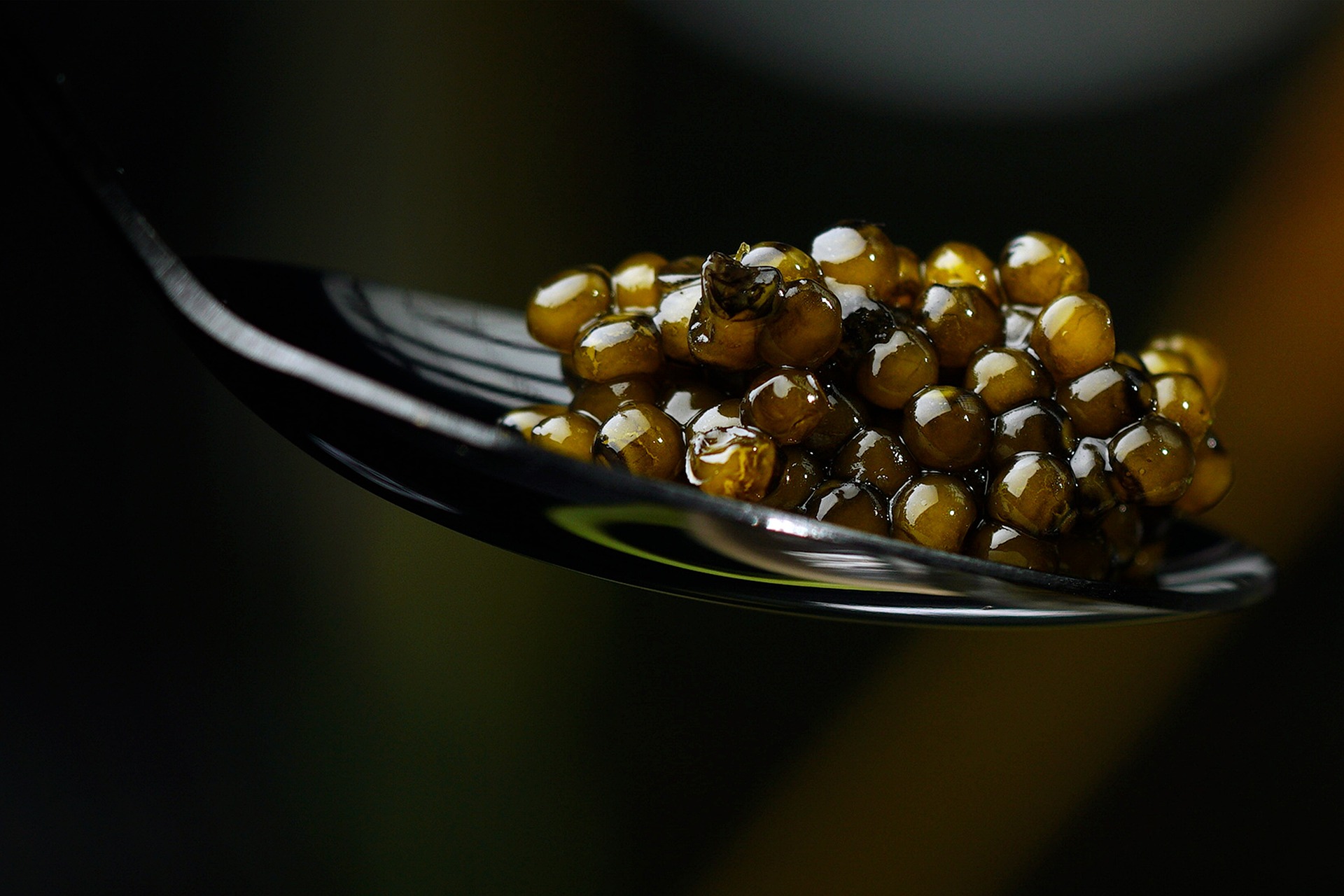Caviar, the world’s most luxurious delicacy, has been a symbol of opulence for centuries. This prized roe, harvested from sturgeon, has been enjoyed by royalty and gourmands alike. However, in recent years, the caviar industry has faced significant environmental challenges. Overfishing, habitat destruction, and illegal poaching have led to the decline of wild sturgeon populations, putting the species at risk of extinction. In response, the industry has evolved, and the concept of sustainable caviar has emerged as a way to protect the environment while still offering this sought-after delicacy.
What is Sustainable Caviar?
Sustainable caviar refers to caviar that is produced through environmentally responsible and ethical methods, typically using aquaculture (fish farming) rather than harvesting from wild sturgeon populations. It ensures that the caviar is sourced from farms that follow strict sustainability practices, protecting the natural ecosystems and maintaining sturgeon populations for future generations.
Sturgeon farming for sustainable caviar involves raising the fish in controlled environments where their growth, reproduction, and health are closely monitored. The goal is to produce high-quality caviar while minimizing the negative impact on the environment and conserving wild sturgeon populations.
The Environmental Impact of Traditional Caviar Production
Historically, caviar was harvested from wild sturgeon in rivers and seas across the world, particularly in the Caspian and Black Seas. As demand for this delicacy grew, sturgeon populations began to dwindle. By the late 20th century, several species of sturgeon were listed as endangered, prompting conservation efforts to save these ancient fish from extinction.
Traditional caviar production posed numerous environmental problems:
-
Overfishing: The global demand for caviar led to the overfishing of wild sturgeon populations, particularly in the Caspian Sea, which once accounted for a large portion of the world’s caviar supply. As a result, sturgeon populations plummeted, putting several species at risk of extinction.
-
Illegal Poaching: As sturgeon became rarer, illegal poaching surged. Poachers often harvested the fish before they reached maturity, exacerbating the decline in wild populations.
-
Habitat Destruction: The construction of dams, pollution, and other human activities have damaged sturgeon habitats, further contributing to their decline. Sturgeon are slow-growing fish that take many years to mature, making their recovery difficult without intervention.
How Sustainable Caviar is Produced
Sustainable caviar production seeks to address the challenges of traditional methods by focusing on responsible aquaculture. Here’s how sustainable caviar is produced:
Aquaculture Farms
Sustainable caviar comes from sturgeon that are raised on aquaculture farms designed to mimic the fish’s natural environment. These farms use advanced techniques to monitor water quality, fish health, and growth rates. The sturgeon are raised in large, controlled ponds or tanks that provide ample space for the fish to swim and grow.
These farms often have strict regulations in place to ensure that the fish are treated humanely, and the surrounding ecosystem is not harmed by their operations. By raising sturgeon in controlled environments, aquaculture farms help reduce the pressure on wild populations and contribute to their conservation.
Eco-Friendly Practices
Sustainable caviar farms prioritize eco-friendly practices to minimize their environmental impact. These practices include:
-
Water Management: Farms use advanced filtration systems to maintain clean water, reduce waste, and prevent pollution from entering nearby waterways. Some farms recycle water to further conserve resources.
-
Sustainable Feed: Sturgeon are fed high-quality, sustainable feed designed to mimic their natural diet. This ensures that the fish remain healthy without the need for harmful chemicals or antibiotics.
-
Energy Efficiency: Many sustainable farms employ energy-efficient systems to reduce their carbon footprint. Solar power, wind energy, and other renewable sources are often used to power the farms.
No Harm to Wild Sturgeon Populations
One of the key benefits of sustainable caviar is that it does not contribute to the depletion of wild sturgeon populations. By relying on farm-raised sturgeon, sustainable caviar producers help protect endangered species and allow wild populations to recover. Many farms also participate in breeding programs aimed at reintroducing sturgeon into the wild, further supporting conservation efforts.
The Importance of Sustainable Caviar for Conservation
Sustainable caviar is not just about producing a high-quality product—it’s also about ensuring the long-term survival of sturgeon and the health of aquatic ecosystems. Here’s why sustainable caviar is so important for conservation:
Protecting Endangered Species
Many species of sturgeon are critically endangered due to overfishing and habitat destruction. By producing caviar through aquaculture, sustainable farms help reduce the pressure on wild populations, allowing them to recover. Additionally, some farms work with conservation organizations to breed and release sturgeon back into their natural habitats, supporting efforts to restore wild populations.
Supporting Biodiversity
Sturgeon are an essential part of their ecosystems, playing a key role in maintaining the health of rivers and seas. By protecting sturgeon populations, sustainable caviar production helps preserve the biodiversity of these ecosystems, ensuring that other species can thrive as well.
Minimizing Environmental Impact
Sustainable caviar farms prioritize environmentally friendly practices that reduce their impact on the surrounding environment. By using sustainable feed, managing water resources carefully, and reducing waste, these farms help protect the ecosystems in which they operate. This commitment to sustainability ensures that caviar production can continue without causing harm to the environment.
Choosing Sustainable Caviar
As consumers become more aware of the environmental impact of their food choices, the demand for sustainable caviar has grown. When choosing caviar, it’s important to look for products that are certified by reputable organizations such as the Aquaculture Stewardship Council (ASC) or the Marine Stewardship Council (MSC). These certifications guarantee that the caviar has been produced using sustainable methods and that the farm adheres to strict environmental and ethical standards.
Additionally, many sustainable caviar brands offer transparency about their production methods, allowing consumers to learn more about the farms and the fish that produce their caviar. By choosing sustainable caviar, consumers can enjoy this luxury delicacy while supporting conservation efforts and protecting the environment.
